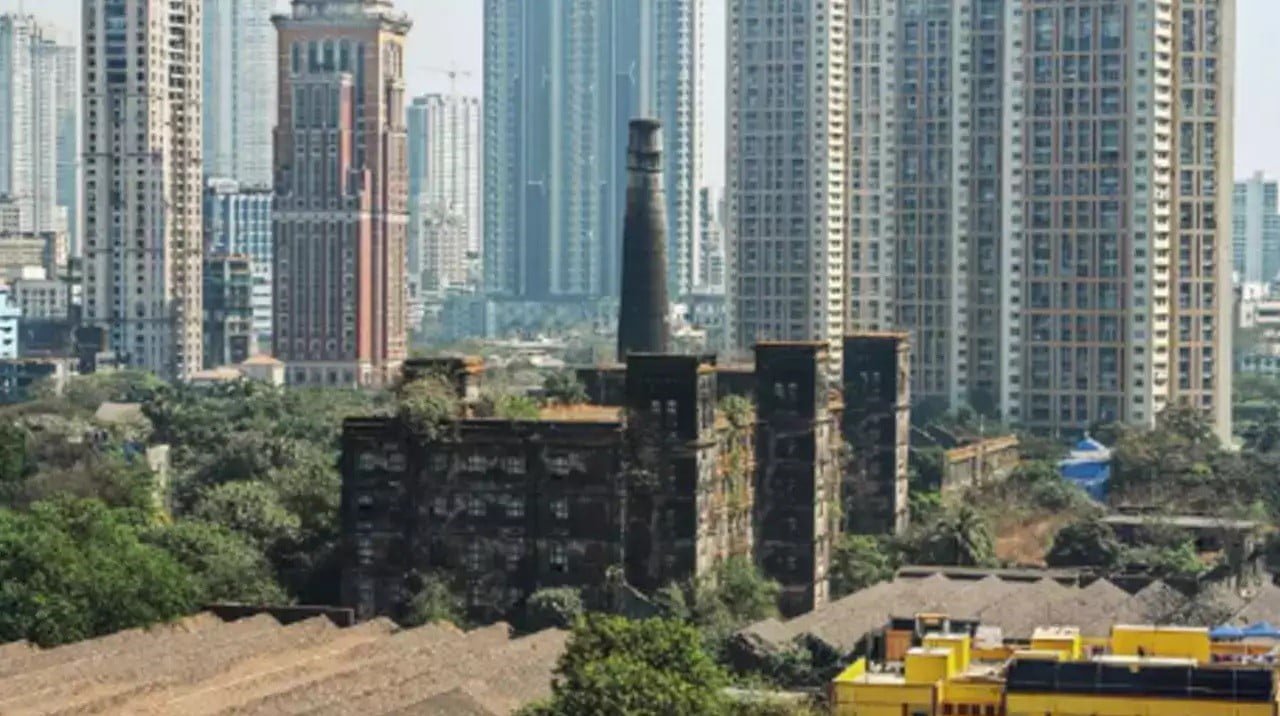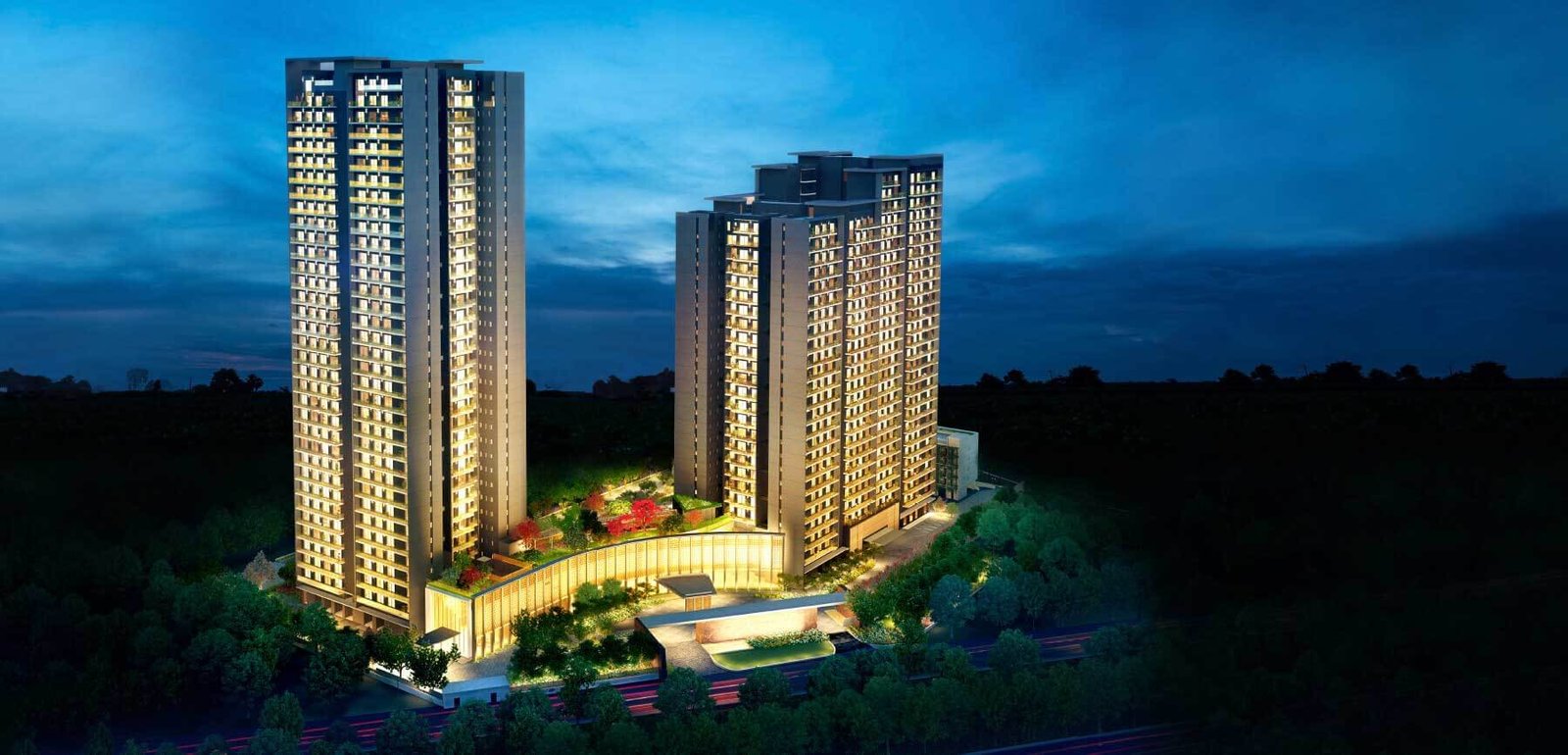A massive 18 lakh sq ft of new construction will be generated in central Mumbai due to the redevelopment of 11 chawls inside nine defunct National Textiles Corporation (NTC) mills. It’s a real estate influx that, planners say, could put more pressure on already overloaded public infrastructure and leave residents gasping for open spaces. Or it may be an opportunity to provide residents and office goers in central Mumbai with a better quality of life.
Of the 18 lakh sq ft of construction proposed, around 6 lakh sq ft will be to rehouse free of cost the 2,062 tenants currently living in NTC chawls. The builder who wins the bid to redevelop the chawls will then be entitled to receive a humungous 12 lakh sq ft in the free sale component. The value of the free sale portion could be more than Rs 5,000 crore, according to property experts.
Last month, the Centre asked the state government to help redevelop chawls on the nine NTC mill lands in the city spread over 14 acres. Union textiles minister Piyush Goyal had said NTC did not have the expertise to carry out the redevelopment of the chawls, which are old and dilapidated. However, he emphasised that the redevelopment was not a precursor to commercial redevelopment of NTC lands.
Global property firm Cushman and Wakefield has been appointed consultants for the redevelopment project. According to the minister, the consultant will help define the role of the state and central governments for facilitating redevelopment. The project report is expected by March.
“All the 2,062 residential and commercial occupants of NTC chawls are required to be rehabilitated by NTC under provisions of the city’s new Development Control Promotion Regulation,’’ said a C&W official. These chawls are in different pockets of the nine NTC mill lands across central Mumbai and Mahim. The NTC controlled 18 mills in Mumbai, all of which have ceased operations.
Pankaj Kapoor, founder & MD of Liases Foras, a real estate rating and research firm, said the new construction on NTC lands will further stress the property market. “There are 278 ongoing projects in the catchment of the NTC mill lands in central Mumbai, which have 18,728 flats or 36 million sq ft of unsold stock with 66 months of inventory. The redevelopment of NTC chawls would produce a free sales component of 12 lakh sq ft of supply and is insignificant in comparison to the existing unsold 36 million sq ft space. However, the impact will be very high when the remaining portion of these mills comes for development,’’ he warned.
“Owing to the previous mill land development, which infused extensive supply in the micro market, prices of apartments in the micro market have remained stagnant, showing (-0.3%) compounded annual growth over the last eight years. The prospects of future increases in the prices in this micro market are also low,’’ he added.
Urban experts say the redevelopment of the NTC mills offers an opportunity to rectify what Charles Correa had called the “Tragedy of Tulsi Pipe Road”—the chaotic and ad hoc redevelopment of hundreds of acres of mill land in Lower Parel into luxury housing and corporate offices without additional civic infrastructure or social amenities.
That tragedy is visible every day in the area: endless traffic, hardly any green cover or parks or public spaces, no proper pavements for commuters who swarm down from the stations, and limited east-west links.
“There was an opportunity at that time to work with large tracts of land that could have given the city integrated open spaces and mixed-use development,” said Anuradha Parmar, executive director of Urban Design Research Institute. Instead, “we have bubbles of siloed developments that have worked hard to cut themselves off from their immediate surroundings.”
An analysis done for F/South ward for Development Plan 2034 shows that the area has a deficit of 31 hectares of land for education and 69 hectares of land for open space requirements. There is also a shortage of land for cemeteries and markets.
An example of how things have gone wrong is Kamala Mills, said V K Phatak, former chief planner of the regional authority. The 14-hectare plot was redeveloped without new provisions for pedestrians or cars, leading to tremendous pressure on the existing network.
At the very least, they should have been asked to create a road on their land and give it over for public use, he said. “When large areas are redeveloped as private enclaves, then traffic and walkability becomes compromised.”
Authorities now have a chance to alleviate the chaos in central Mumbai. The government can prepare a local area plan that accounts for the increase in roads, pedestrian facilities, and open spaces needed to accommodate the influx of more people and vehicles, said Phatak.
Creating a local area plan is legal, he added. “They change the development control (DC) rules every now and then anyway; they can use the same provision for an amendment to create a local area development plan,” he said. Such a plan can provide for road networks, open spaces and amenities, and even provide building design guidelines, he added.
Parmar added that a larger-level study is needed to understand local area needs. The process should also be transparent and democratic, she said. “Policymakers need to look at this land not just in terms of housing numbers and FSI calculations, but as opportunities for other types of uses and amenities.”
Property experts suggest there are also business reasons to ensure the area is well planned. Any surge of development in the area is likely to add luxury housing supply and keep prices in check, says Prashant Thakur, head of research at Anarock. But “someone who buys a Rs 10-15-crore flat is not only looking at the building, they’re looking for a good neighbourhood,” he says, adding that that is one reason why Dubai real estate is now competitive with South Mumbai. “The neighbourhood surroundings are better.”





